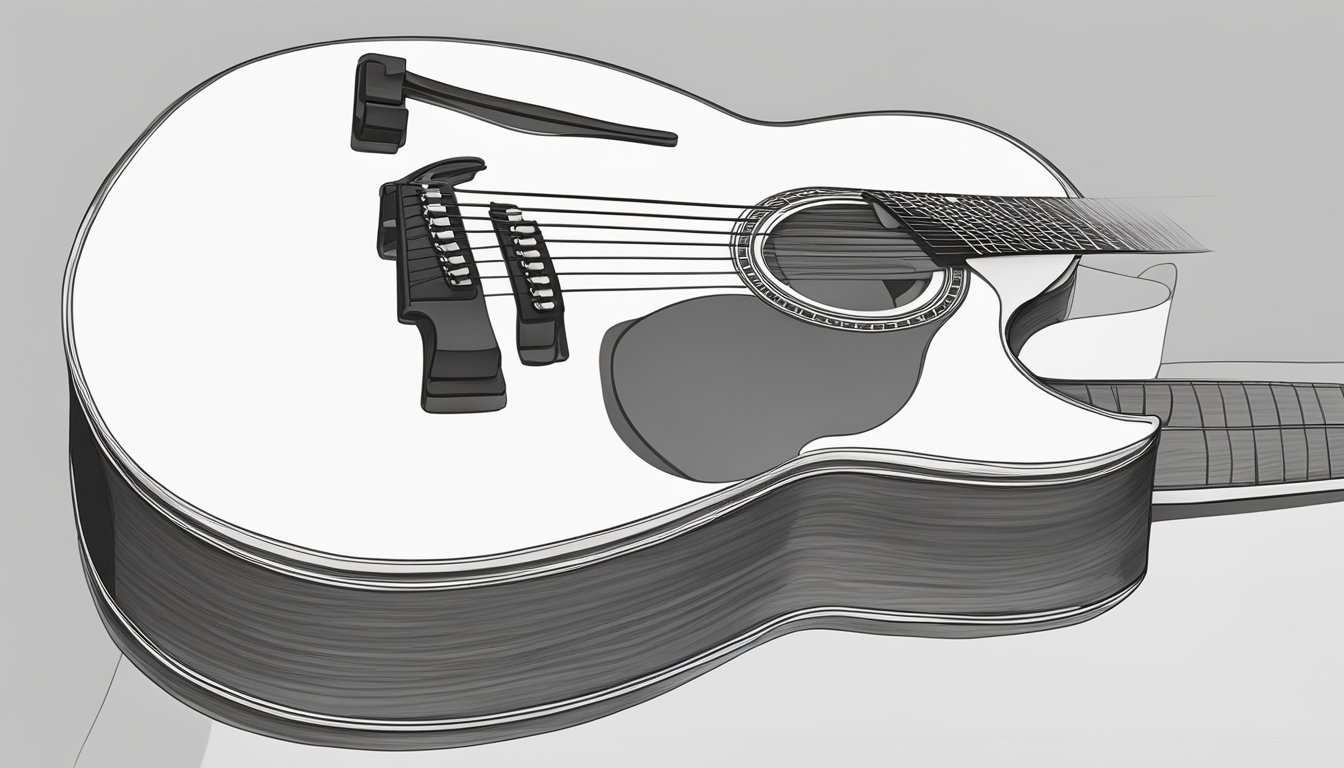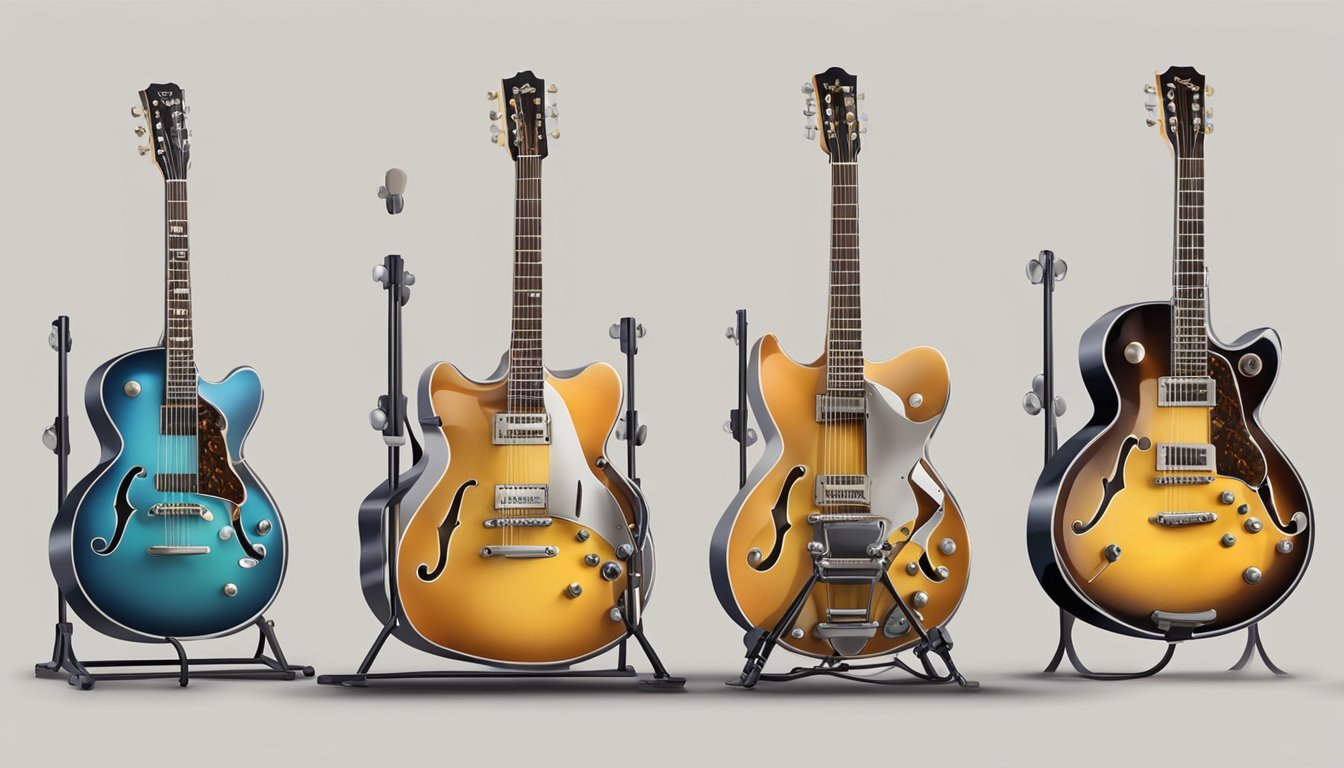Guitar strings are the backbone of your instrument, and knowing about them can really improve your playing. The six strings of a standard guitar are named E, A, D, G, B, and E. Understanding these strings is essential for tuning your guitar and playing your favorite songs.

When you strum or pluck each string, it produces a unique sound that contributes to the overall music you create.
Whether you are just starting out or want to refresh your knowledge, learning about the strings will help you connect more deeply with your instrument.
You’ll find tips and tricks that can make the memorization process a lot easier.
Let’s dive into the world of guitar strings and discover how they can enhance your playing skills and musical expression.
Key Takeaways
- The six strings of a guitar are E, A, D, G, B, and E.
- Each string has a distinct sound that affects your music.
- Knowing your strings helps with tuning and playing.
Understanding Guitar Strings
Guitar strings come in various types and materials, each affecting sound and playability.
You’ll find that knowing the basics helps you choose the best strings for your playing style.
For instance, nylon strings are often favored for classical guitar due to their warm tone, while steel strings are preferred for their brightness and projection in genres like rock and country.
Understanding how different materials affect sound can also enhance your ability to play specific guitar string note names, as each string contributes uniquely to the overall harmony.
Exploring various brands and gauges will ultimately lead you to find the perfect balance that complements your unique style.
Different Types of Guitar Strings
When it comes to guitar strings, there are mainly two types: nylon and steel.
- Nylon strings are often used on classical and flamenco guitars. They give a warm, soft tone, perfect for fingerstyle playing.
- Steel strings are common on acoustic and electric guitars. They produce a brighter sound with higher volume.
Within steel strings, you have options like phosphor bronze, great for acoustic guitars, and nickel-plated steel, commonly used on electric guitars.
These materials enhance durability and improve tone.
Strings are also available in various gauges, which refers to their thickness.
Thicker strings create a fuller sound but can be harder to play.
Choosing the right gauge can make a big difference in how your guitar feels and sounds.
Anatomy of a Guitar String
Each guitar string consists of a core and a winding.
The core is usually made from a solid material like steel or nylon.
For steel strings, the winding can be made of materials such as nickel or phosphor bronze. Nickel strings are popular in electric guitars for their bright tone.
The winding around the core affects the string’s tone and playability.
Thicker winding gives a warmer sound, while thinner winding can enhance clarity.
When you consider the guitar string names from thickest to thinnest, you have E, A, D, G, B, and E. Remembering this order helps you when changing or tuning your strings.
Each type of string serves a purpose, so picking the right ones matters for your style.
Guitar Tuning and Notes
Tuning your guitar is essential for producing the right sound.
Understanding standard tuning and different tuning methods makes playing easier and opens up new musical possibilities.
Standard Tuning Explained
Standard tuning for a six-string guitar is E-A-D-G-B-e, from the lowest (thickest) string to the highest (thinnest).
Each string name corresponds to a note.
- Low E String: The thickest string, tuned to E.
- A String: Next, tuned to A.
- D String: The third string, tuned to D.
- G String: Fourth, tuned to G.
- B String: Fifth, tuned to B.
- High e String: The thinnest string, also tuned to E.
In standard tuning, you can easily play a variety of chords and melodies.
Knowing these notes helps you tune your guitar accurately, which is key to sounding great when you play.
Alternate Tuning Methods
There are many alternate tuning methods to explore different sounds and styles.
Here are a few popular ones:
-
Drop D Tuning: The low E string is tuned down to D, changing the tuning to D-A-D-G-B-e. This creates a heavier sound and makes it easier to play power chords.
-
Open G Tuning: In this tuning, the strings are adjusted to G-D-G-B-D. It simplifies playing certain types of chords and is often used in blues.
-
DADGAD: This tuning has a unique sound, with strings tuned to D-A-D-G-A-D. It’s great for fingerstyle and folk music.
Experimenting with these tunings lets you discover new chords and melodies.
Make sure to try them out to find what works best for your style!
Playing the Guitar

When you start playing guitar, you’ll discover how chords and fretboard knowledge come together.
It’s essential to understand your instrument and explore various techniques to enhance your playing.
Chords and Fretboard Familiarity
Knowing guitar chords is key to making music.
The most common chords include major, minor, and seventh chords.
You can find chord diagrams that show you where to place your fingers.
Familiarizing yourself with the fretboard helps you visualize where each chord sits.
Use mnemonic devices to remember the names of strings, like “Every Angry Dog Growls Big Ears” for E-A-D-G-B-E.
Spend time practicing the most popular chords such as C, D, G, and E minor.
You’ll find these used in many songs.
Also, practice switching between chords smoothly.
This skill will improve your strumming and picking.
Techniques for Guitar Players
There are many techniques to improve your guitar playing.
For starters, learn to strum and pick properly.
Strumming involves moving your pick or fingers across the strings to create rhythm.
Try different styles like fingerstyle, which uses your fingers instead of a pick.
This technique can produce a softer tone and allows for intricate melodies.
Additionally, reading sheet music can be a helpful skill.
It lets you understand the timing and structure of songs.
You might also want to learn tablature, which is easier for many beginners.
Keep experimenting with sounds and tones to find your unique style.
Remember, practice helps you grow as a guitarist!
Frequently Asked Questions
You might have some questions about guitar strings and how they work.
Here are answers to help clear things up for you.
How can you memorize the names of guitar strings?
A great way to memorize the names is to use a phrase.
For example, use “Eddie Ate Dynamite, Good Bye Edie” to remember the strings E, A, D, G, B, and e. The first letter of each word matches the string names.
What’s the usual order for guitar string thickness?
The usual order for guitar strings from thickest to thinnest is 6, 5, 4, 3, 2, and 1.
String 6 is the thickest, while string 1 is the thinnest.
Keeping this in mind helps you tune and change strings properly.
Can you explain the guitar strings for newbies?
Guitar strings are the wires that produce sound when they are played.
Different types of strings, like nylon or steel, give different tones.
Understanding the basics can help you choose the right strings for your style.
What notes do the guitar strings correspond to?
In standard tuning, the guitar strings correspond to the notes E, A, D, G, B, and e, from thickest to thinnest.
Knowing these notes helps with tuning and playing chords.
Is the thickest guitar string numbered 1 or 6?
The thickest guitar string is numbered 6.
This numbering system helps you remember which string is which as you play.
Do most guitars have five or six strings?
Most guitars have six strings.
However, there are guitars with fewer strings, like five-string bass guitars.
Understanding the typical six-string setup is key to learning how to play.

